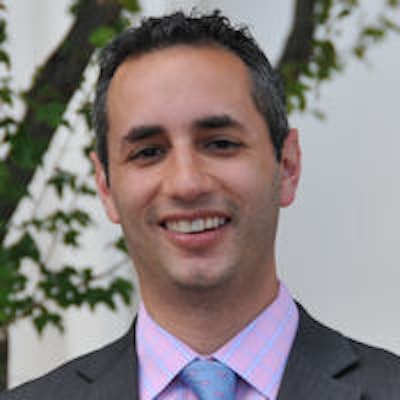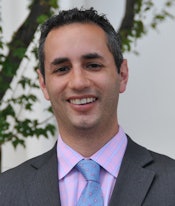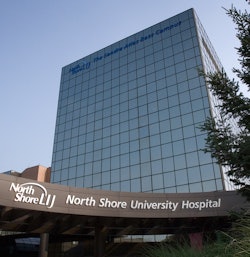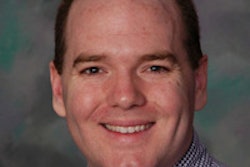
In the first of a two-part series on integrating imaging informatics in a health system, AuntMinnie.com presents the experience of the North Shore - LIJ Health System (NSLIJ). Part 2 will describe the experience of the Yale New Haven Health System.
The recent wave of healthcare consolidation is creating provider networks with a patchwork of imaging informatics technology -- from PACS to RIS to 3D -- that can present major integration headaches. North Shore - LIJ Health System (NSLIJ) recently faced such a task and shared its experience in conquering integration challenges.
As the institution worked toward its goal of a system-wide integrated imaging environment, NSLIJ learned the value of organization-wide standards and policies, and the need for collaboration between radiology IT and hospital IT staff and with external clinical departments. Health systems must also weigh a number of key technology decisions, such as choosing between a best-of-breed modular IT model or a single turnkey system, according to Dr. Jesse Chusid, a cardiothoracic radiologist and chief of imaging informatics.
Chusid shared NSLIJ's experience and progress during a talk on September 16 at the New York Medical Imaging Informatics Symposium in New York City.
Shifting landscape
The NSLIJ health system is the product of a 1997 merger between North Shore University Hospital and Long Island Jewish Medical Center, as well as multiple additional acquisitions over the following 15 years. NSLIJ encompasses 14 hospitals, seven outpatient imaging centers, and more than 200 attending and resident radiologists. The system has more than 9,000 physicians and more than 43,000 total employees, Chusid said.
NSLIJ was created in response to changes in the financial landscape for healthcare. "Much regulation has forced the health system to look for economies of scale and find ways of consolidating disparate health centers in a single consolidated entity," he said.
 Dr. Jesse Chusid, chief of imaging informatics.
Dr. Jesse Chusid, chief of imaging informatics.
Even as the system was consolidating, imaging services weren't necessarily consolidating in lockstep, however.
"We started out as a bunch of relatively fragmented radiology departments, all with very different clinical practices," he said.
While radiology services were historically provided by external radiology groups at many community hospitals, all community hospitals were integrated under a single radiology leadership group beginning in 2010.
There were five independent radiology PACS implementations, with a total of 27 independent active PACS silos. There also was an increasing number of non-DICOM image archives, he said.
In addition, the health system included three disparate RIS and two RIS/PACS modules, as well as five independent dictation engines and seven thin-client 3D servers.
"That presents a real economic challenge, and in days when everybody is looking for ways to find economic solutions, this doesn't really scale well," he said. "There's a ton of [IT staffing] overhead with operating so many systems."
In addition to the differences in technology among the sites, there were variations in policies. This included different imaging protocols, procedure descriptions, and naming conventions for DICOM fields, Chusid said.
What's more, the enterprise master patient index was not fully implemented in the radiology systems, meaning there wasn't a consolidated imaging record.
Cleaning up
Resolving system heterogeneity required a cleanup process, which involved setting a lot of standards. Organizational changes were made, establishing service-line groups that brought together the leadership elements of every department, such as a service-line value analysis team, Chusid said.
"We transformed this into a regular meeting where all of the administrative directors of radiology get together on a monthly basis to set best practices and to share their direction," he said. "Without that sort of communication structure, there would be no way to change such a large organization."
A service-line performance improvement coordinating group brings together clinical and quality leadership from all of the sites to develop standard practices.
One of the initiatives underway addresses the different image-naming conventions used among the databases at the various institutions. NSLIJ elected to deal with this problem by renaming the studies using standard nomenclature, which is a very labor-intensive process. This effort is about halfway complete, Chusid said.
The role of technology
Technology was also part of this effort, and the need to cross-read images across all health-system sites was the most important driver behind this aspect of the plan.
"We are trying strategically to push subspecialty expertise that exists in our tertiary centers to every single center in our network," he said. "In order to flex all of those resources, which are fairly limited resources, you need to bridge the chasm of clinical systems that don't talk to each other."
They decided they didn't want a single turnkey approach, favoring instead a best-of-breed multivendor model. This allows customization without having to do much coding, and the flexible, modular approach helps avoid vendor lock-in.
NSLIJ also wanted a technology solution to support the entire imaging event chain. Core IT components to support this goal of an end-to-end system included the following:
- A single primary radiologist viewer
- A single clinical viewer
- 3D/advanced visualization applications for the enterprise
- A vendor neutral-archive (VNA) that can serve as a single master index
- A single dictation engine
- A single workflow orchestrator such as smart worklists
NSLIJ also needed to consider support systems such as decision support, business analytics (operational dashboards), physician scheduling, radiation dose management, and peer review and quality databases, he said.
Presently, most IT resources are accessed off-campus via a virtual private network (with the NSLIJ Remote Access Portal). Two-factor authentication is required.
VNA
The health system sought a VNA to provide a consolidated imaging record for referring clinicians and to store unencapsulated standard data formats as well as non-DICOM imaging (JPEG, WAV, AVI, PDF, etc.), Chusid said.
It would improve flexibility to migrate to and from different software systems and enable image lifecycle management.
 North Shore University Hospital, part of NSLIJ Health System. Image courtesy of NSLIJ.
North Shore University Hospital, part of NSLIJ Health System. Image courtesy of NSLIJ.
Collaboration with other specialties is important whenever a VNA is being adopted. Reliable storage architectures are an institutional need, so very early on, a consortium was built to include cardiology, pathology, radiation oncology, and orthopedic surgery.
"Proposing a major overhaul in your technology infrastructure is no small task," he said. "I can tell you it took us basically two years coming -- proposing and reproposing a set of solutions before we got the green light from our corporate folks."
What about RIS?
RIS has been a historical "source of truth" for imaging data, providing a master procedure index, reports, and tracking elements for reporting. However, it's become an increasingly inflexible piece of technology, Chusid said.
Instead, radiology study metadata could live elsewhere, such as in the electronic medical record (EMR), a DICOM header, a dictation engine, or a workflow orchestrator.
The health system has no plans to adopt a single RIS due to the complexity of making that change, as well as the sense that data would migrate over time to other systems; therefore, NSLIJ considered having the dictation engine serve as the center of workflow for all radiologists.
For most sites, a seven- to 10-day moving average of radiology reports is kept within the dictation engine. After that, the reports are dropped off and stored in the RIS.
"Our plan is to move all imaging reports into that [dictation] system and to leverage some of the technologies of the new dictation system that we're looking at," he said.
The group has also looked at adopting standard reporting templates using American College of Radiology (ACR) templates.
Workflow orchestrator
The workflow orchestrator would need to accommodate individually tailored service-level agreements for the emergency department, inpatient, and outpatient environments. The health system would also prefer workload-balancing capabilities, Chusid said.
Decision support is also an important technology, he added.
"As we as a health system embrace accountable care models, and as we start to enter risk-based contracting and capitated models for reimbursement, [decision support] is going to be pivotal," he said. "Radiology in a fee-for-service world has really been a profit center driven by our outpatient imaging. In these new worlds, we're really more of a cost center until we find a way to define radiology's impact on outcomes."
In the meantime, hospitals are going to be looking at ways to stem inappropriate use of imaging studies, and decision support is a great way to do it, according to Chusid.
"One thing we do know and have learned from the experience we've had to date with imaging utilization and decision support is that [feedback] needs to come back to the providers on a per-provider basis," he said. "You need to be returning to people a scorecard about the appropriateness levels of the imaging they've ordered; otherwise, it doesn't change anybody's behavior."
Business analytics
A big push has been made by the health system over the past 18 months in business analytics software that can bridge the enterprise, Chusid said.
"When you have the number of databases we have, you really need a single database aggregator to make decisions about management," he said. "This is a lot of what we use to drive economic decisions within the department, and to make the right decisions where to invest in your imaging centers, where to potentially purchase new imaging centers. A lot of this goes to quality. Remember, if you can't measure these things, you can't manage them."
Physician scheduling software is another area in which NSLIJ will invest. Recent analysis found that physician time for manual scheduling costs $250,000 in annual physician salary expenses.
"This was a staggering number," he said. "Given the cost of some very good scheduling solutions that are out there, it's a no-brainer that we will move to a scheduling system that's automated."
Radiation dose management
Radiation dose management was actually the first piece of enterprise software installed for radiology at the health system.
"It was the first database we had which literally touched every site that provided radiology services," Chusid said.
Dose data are aggregated across all CT scans performed in the health system, and programs are targeted toward the results of those data, he said. A radiation safety team evaluates the data on a weekly basis and follows up on outlier doses.
Peer review and quality databases are also being used to track things such as discrepancies, procedure complications, and technology quality assurance.
Lessons learned
On its path to consolidating imaging informatics, NSLIJ has learned a number of lessons. First, there is no single right way or set of solutions for every particular location, Chusid said.
Collaboration is also essential to getting anything done in a large organization, he noted.
"We have an excellent working relationship between the radiology IT staff and the corporate IT staff," he said. "Without the relative expertise of both of those folks, one very close to the business and one very close to the chief information officer, it's very hard to move solutions forward. Similarly, I can't overestimate the value of getting buy-in from other clinical departments."
Everything is a trade-off, such as the question of whether to adopt a modular or an integrated system.
"We are leaning in the direction of modular technologies, but what you gain in flexibility you lose to some extent in having to work with integration efforts, along with the more robust and varied technology stack," he said.
It's important to utilize systems that embrace open standards, he said. "That's the only thing that's going to allow us, in the future, the flexibility to move these kinds of technologies without a gigantic overhaul."




















